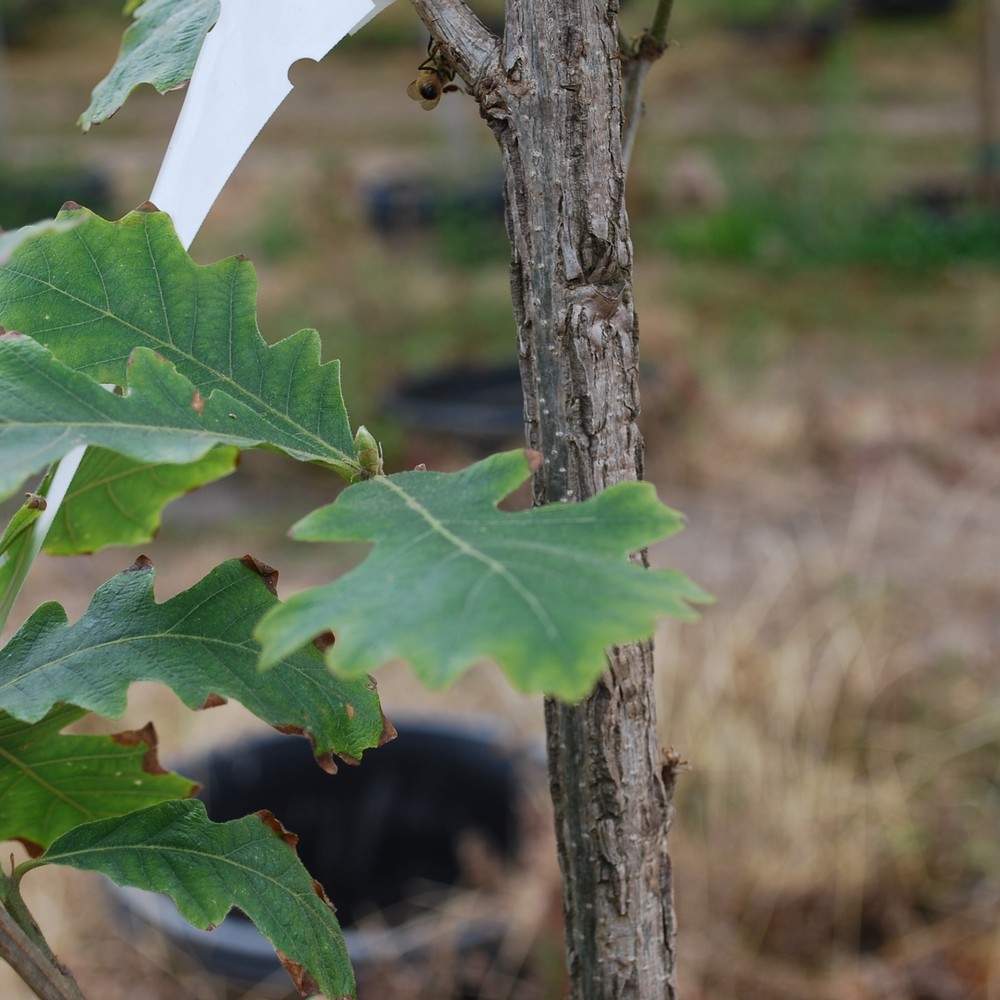Bur oak
(Quercus microphylla)

Description
Quercus macrocarpa, commonly known as the bur oak, is a large, majestic tree native to North America. It belongs to the Fagaceae family, which includes other popular species like the chestnut, beech, and oak. Description Bur oak trees can grow up to 30 meters in height and 60 centimeters in diameter. They have a broad, rounded crown and a thick, rough bark that becomes deeply furrowed as the tree ages. The leaves are typically 10 to 25 centimeters long and wide, with 5 to 9 lobes that have deep sinuses. The upper surface of the leaves is dark green and shiny, while the underside is paler and covered in soft hairs. In the fall, the leaves turn a beautiful shade of yellow or brown. The fruit of the bur oak is a large acorn, measuring up to 5 centimeters long and 4 centimeters wide. The acorns have a thick, warty cap that covers about one-third of the nut. They mature in two growing seasons, dropping from the tree in the fall. Distribution and Habitat Quercus macrocarpa is native to central and eastern North America, ranging from the Great Plains to the Appalachian Mountains. It is a hardy species, adapted to a range of soils and climates. Bur oaks can grow in sandy or clay soils, and can tolerate both wet and dry conditions. They are also tolerant of fire, and their thick bark helps protect them from damage. Ecological Importance Bur oaks play an important role in their ecosystems. The trees provide food and habitat for a variety of wildlife, including birds, squirrels, deer, and insects. The acorns are an important food source for many species, and the trees themselves provide shelter and nesting sites. Bur oaks also have a strong impact on the environment around them. The trees can reduce soil erosion, as their deep roots hold the soil in place. They also absorb carbon dioxide from the atmosphere and release oxygen, helping to purify the air. Cultural Significance Quercus macrocarpa has played a significant role in the history and culture of North America. Native American tribes used the acorns as a food source, and the bark and wood for medicinal and ceremonial purposes. European settlers used the wood for furniture, flooring, and construction, and the bark for tanning leather. Today, bur oaks are valued for their beauty and shade. They are often planted in parks and large gardens, and are a popular choice for street trees in urban areas. Conservation Status Quercus macrocarpa is not currently listed as a threatened species, but it is facing some threats. The trees are vulnerable to disease, including oak wilt and bur oak blight. These diseases can kill large numbers of trees and have a significant impact on the ecosystem. Bur oaks are also threatened by habitat loss and fragmentation, as land is cleared for agriculture and development. Efforts are being made to conserve Quercus macrocarpa and other oak species. Conservation programs aim to protect existing trees, plant new trees, and educate the public about the importance of these species. In addition, research is being done to develop resistant varieties of oak trees that can withstand disease and other threats. Conclusion Quercus macrocarpa, the bur oak, is a magnificent tree that is valued for its beauty, ecological importance, and cultural significance. This hardy species plays an important role in its ecosystem, providing food and habitat for wildlife and helping to protect the environment. While it is facing some threats, efforts are underway to conserve the species and ensure its survival for generations to come.
Taxonomic tree:







